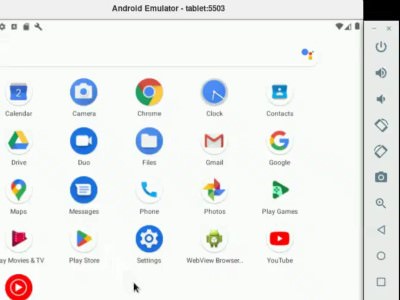Android Emulator
Understanding Android Emulator and How it works
Android emulators are tools that create virtual Android devices on your computer, allowing you to run and test Android apps without needing a physical device. They replicate both the software and hardware environments of an Android device.
How Android Emulators Work
-
Emulation Process:
- Platform Virtualization: Android emulators utilize platform virtualization to simulate the Android operating system. They mimic the hardware and software environment of an Android device.
- Quick Emulator (QEMU): Most Android emulators, including the one from Android Developer Studio, are powered by QEMU (Quick EMUlator). QEMU is an open-source tool that can emulate various guest operating systems and hardware architectures.
- ABI Translation: QEMU translates the Application Binary Interface (ABI) of the guest Android device to match the host computer’s architecture. This allows the Android OS and applications to run on your computer.
-
Performance and Optimization:
- CPU Architecture Translation: Emulating different CPU architectures can be slow due to the complexity of translating instructions between the guest and host CPUs.
- Hardware-Assisted Virtualization: To improve performance, Android emulators use hardware-assisted virtualization. This is where the guest and host CPUs have the same architecture (e.g., both are x86). With this setup, QEMU can bypass the translation process, significantly speeding up the emulator.
Hypervisors
-
Role of Hypervisors:
- Hypervisors are essential for enabling hardware-assisted virtualization. They create and manage virtual machines by providing a layer between the physical hardware and the virtual devices.
- Intel HAXM: For Windows and macOS, Intel’s Hardware Acceleration Execution Manager (HAXM) is used as a hypervisor to enhance emulator performance.
- KVM: For Linux, Kernel-based Virtual Machine (KVM) serves as the hypervisor, offering similar performance improvements.
-
Benefits of Hardware-Assisted Virtualization:
- With hardware-assisted virtualization, the emulator can run at speeds comparable to the host computer’s CPU, making virtual devices more responsive and efficient.
- x86 Android system images support hardware acceleration, enabling faster performance when your CPU supports these features.
Key Takeaways
- Android Emulators replicate Android devices on your computer by mimicking their hardware and software environments.
- QEMU is a critical component in many Android emulators, providing the necessary virtualization and emulation.
- Hardware-Assisted Virtualization improves emulator performance by allowing the guest device to run directly on the host CPU, bypassing complex translation processes.
- Hypervisors like Intel HAXM and KVM are essential for enabling hardware acceleration and enhancing the emulator’s efficiency.
Understanding these components and processes helps in optimizing the performance of Android emulators and provides insight into their operation and capabilities.
Loading...

kittytoe
- 02-03-2021 14:29:07